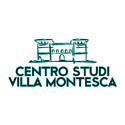Aim of the VISTA project is to support weaker segments of the population in their reinstatement in society and in the labour market. To achieve this result the project experiments a new learning/teaching method based on Participatory Video (PV) to supply disadvantaged subjects with basic skills, both relational and operational, strengthening the subjects’ capabilities to entertain interpersonal relationships as well as helping them to adapt to the social and working context. The method focuses on the concepts of spontaneity/creativity, the theory of roles, the value of relationships and the group-behaviour. The spontaneity of the interventions, the symmetry and the relaxed spontaneity in answering which characterises the PV method reduce the feeling of anxiety and the difficulty of expression. The PV (that has in itself many other languages such as irony, narrative, body and music) is a valid approach to carry out the aim of the project: it can be therapeutic for adults with different degrees and levels of disability, disadvantage and social exclusion as a way to overcome social barriers and at the same time to acquire new relational and professional competences. The PV can favour the engagement (video is an attractive tool, which gives immediate results), the empowerment (a rigorous but fun process giving participants control over a project), the clarification (participants find their voices and focus on local issues of concern), the amplification (participants share their voices with other groups or communities, including decision-makers, donors and general public), the catalysing (participants become a community, which takes further action), the accessibility (living stories are captured by communities themselves; projects can be documented and evaluated; policy information and decisions can also be transferred back to the community level through PV), the possibility to equip disadvantaged adults with basic skills and positive attitudes (group-working and listening skills, self-esteem building and motivation techniques; PV develops an active role for participants in improving their inner capacities). Therefore, the methodology proposed leads to the acquisition, the re-discovery and the consolidation of relational and communication competences indispensable for interpersonal relations which help people to adapt or re-adapt to both a social and work context:
- Self-development and self-realisation – development of personality (cognition, emotion, behaviour)
- Acquisition of operational and technical competences – use of the camera, video editing…
- Promotion of integration – support of instatement/re-instatement in society and in the labour market.
- Personal development, social integration, thus favouring social instatement and active citizenship
The method will be experimented in 6 European countries (Italy: group of unemployed with psychic or social hardship; Lithuania: group of Rom; UK: group of people with mental disabilities; Greece: group of adults with physical disabilities; Spain: group of long-term unemployed people with social difficulties; Germany: group of migrants) so the validity of the method in reaching the above specified aims can be checked during the project lifetime. It must be underlined that the project can reach its objectives also through the dissemination of the practices and of the on-going and final results (a range of impressive initiatives and suggestions can be documented by those directly involved, cheaply and effectively, and shared across the countries and even further abroad; decision makers, other diverse stakeholders and the wide public can be deeply affected by the stories told trough the PV and by the images captured; the Web 2.0 enables videos to be streamed and downloaded freely and shared across boundaries, thus PV has also the potential to bridge the digital divide).

